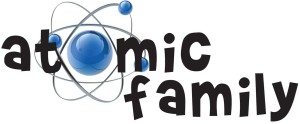Adults, especially those who were in college in the ’80s and ’90s, are likely to know They Might Be Giants from hits like “Ana Ng,” “Don’t Let’s Start,” the charmingly upbeat “Birdhouse in Your Soul,” or one of the band’s hundreds of other songs from a catalog spanning almost four decades.
Those who don’t know the band by name still have surely encountered them in pop culture, recognizing their unique sound in the “Malcolm in the Middle” theme song or one of a string of catchy Dunkin’ Donuts commercials. However, today’s kids are more likely to have been introduced to They Might Be Giants via television theme songs, cartoon spots, or one of the band’s four children’s albums and DVDs: No!, Here Come the ABCs, the Grammy-award winning Here Come the 123s, and the recently released Here Comes Science.
A band for all ages, They Might Be Giants were “geek chic” before there was such a thing, producing fun yet layered and complex pop that always sounded almost like it was meant for kids but still contained themes and concepts that an adult could love. According to John Flansburgh, half of the duo that makes up the core of They Might Be Giants (the other half being John Linnell), the band didn’t intend to become known for its children’s music at all. Speaking to Ruckus from New York, where the band makes its home, he notes, “We did No! as a one-time project. We thought, we’ll do a kids’ album and hopefully people will like it and it will be a nice additional catalog item that will probably sell a little bit over the years.”
And why write a children’s album at all? “We had kind of gone through a phase of doing a lot of touring and trying to figure out ways of not going broke. We were doing stuff for television and branching out — trying to figure out a way to not be forced to be living out of a van for the rest of our adult lives. So we were open to the idea; it seemed like a very wide-open writing assignment.”
The success of No!, the band’s first children’s album and ninth studio album which came out in 2002, took the band by surprise. “I don’t think we had any notion that it would be as well received as it was. It was instantly a huge critical favorite and then it became a really big audience favorite. It really created a whole new audience for us, very quickly.”
He continues, “It kind of woke us up to what was really out there. And part of me can’t help but think there isn’t that much of quality available for families. Right now, I think you’re seeing a lot of more interesting children’s acts trying to fill the void, but at the time [that No! was released], it just seemed like it was very dry. I think people were very hungry for something different.” But the band’s intent isn’t to be straightforwardly educational with its children’s songs, the subjects of which vary widely — from silly songs about missing letters and the contents of grocery bags to more overtly factual songs about the circulatory system and multi-sided polygons.
“I think the trend of adding this vitamin-enriched, information-enriched material for kids is a bit unnecessary,” Flansburgh says. “It’s more important that the music is entertaining to me than it actually be an educational delivery system. If it’s not entertaining, it’s just not going to be compelling on any level. And I think people underestimate the effect of an imaginative song. Songs affect you in a very different way than books or straight information affects you. They’re pretty magical things.”
At family shows, which the band offers in select cities, the setlist pulls primarily from the four children’s albums, but some songs from They Might Be Giants’ extensive adult catalog do show up as well.
 Flansburgh points out that it took the band some time to work out what elements of a live show would make a family show a success. “We’ve learned a few things over the years. We keep house lights up a little bit so kids don’t freak out sitting in the dark … And of course it’s a lot quieter.”
Flansburgh points out that it took the band some time to work out what elements of a live show would make a family show a success. “We’ve learned a few things over the years. We keep house lights up a little bit so kids don’t freak out sitting in the dark … And of course it’s a lot quieter.”
The band also gives out props to the kids in the audience, making for an entertaining view of “a sea of foam hands” from the stage. But overall, he says, “our kid shows have gotten a lot more successful in the last couple of years. We’ve gotten more used to the idea — and gotten over ourselves.” The crowd at the family shows is varied, with Flansburgh observing that “there are a lot of young parents who weren’t active on the alternative rock scene, and we just weren’t on their radar; for the kids’ music scene, we’re very much on their radar.”
But he’s quick to add, “There are also hardcore TMBG families [that come to the shows]. Our music has been in their lives for 20 years full on, and that’s the opposite. It’s just part of their identity. That’s very flattering.” Flansburgh finds that part of the appeal for him when playing a family show is introducing the kids in the audience to the concept of live music. “Kids don’t see that much actual music being played,” he says. “They hear a lot of prerecorded music. And in a lot of ways, they probably end up thinking about music in the same way they think about CGI. It’s some magical effect sprinkled on top of packaged entertainment. So when we come out and sing and play a song completely live, it kind of opens their eyes to something that they could have had very limited exposure to up until then.”
And adult fans need not worry — the band has in no way left behind its main focus of making music geared toward grownups. “We enjoy writing and recording and performing for kids, but we aren’t anxious to be thought of as children’s entertainers,” Flansburgh says.
“We’ve been stuck in rock clubs for our entire adult lives and we are the fish out water [at the family shows]. Every show we do where we don’t actually accidentally swear is a huge victory for us.”
And do any of the kids’ songs show up at the adult shows? Flansburgh says some do, on occasion; for example, “Clap Your Hands,” on record a light song about clapping and stomping to the beat, changes completely when played to a crowd of adults. “It’s a lot closer to seeing James Brown, or some crazy blues shouter kind of song than seeing a children’s song. This song is essentially screamed.” Flansburgh and Linnell are currently putting their all into their next project, a follow up to their 2007 release The Else, which was produced by The Dust Brothers, Pat Dillett, and They Might Be Giants.
“We are working on an adult album in earnest, but it’s got to be really good, so it’s taking more time than we thought it would,” he explains. “Six months ago, we thought we’d be wrapping it up. But we did a bunch of recording and we’ve now retreated back to the writing phase.” As a teaser for his grown-up fans, he cryptically adds, “I think we’re just about to double down on the adult music.”
To learn more about the band, check out theymightbegiants.com, where you can download a “Clock Radio” widget that will play you music for days, or TMBW.net.














